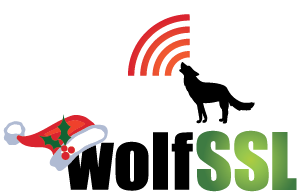One of the highlights of our wolfCrypt library is its exceptional portability, which allows wolfSSL’s team of engineers to frequently add new ports! Stay tuned for the rest of our blog series on the latest open source project ports over the next few weeks. This week, we’re showcasing libssh2! We have integrated wolfSSL with the […]
Read MoreMore TagMonth: August 2021
lighttpd Upstream Support
lighttpd has added support for wolfSSL in version 1.4.51! lighttpd is a fast and lightweight web server designed with a very low memory footprint. These design goals make wolfSSL an excellent choice as the SSL/TLS implementation, as it’s built to be lightweight, portable, and very fast. wolfSSL targets embedded and IoT devices but works just […]
Read MoreMore TagOpen Source Project Ports: NTP
Because of the exceptional portability of our wolfCrypt library, plus our fantastic team of engineers, we’re able to frequently add new ports. We’ll be showcasing a few of the latest open source project ports over the next ten weeks, so tune in! First, we just integrated wolfSSL with the NTP (Network Time Protocol) project. This […]
Read MoreMore TagECIES – SEC.1 and ISO/IEC 18033
The wolfSSL library has for a long time supported encryption and decryption using ECC with an implementation of ECIES (Elliptic Curve Integrated Encryption Scheme). Recently the ECIES code was updated to support the SEC.1 and ISO/IEC 18033 variants. ECIES is the elliptic curve equivalent of the RSA encryption algorithm and is useful as a key […]
Read MoreMore TagSniffing traffic with TLS v1.3
The wolfSSL library includes a useful tool for sniffing TLS traffic. This can be used to capture and decrypt live or recorded PCAP traces when at least one of the keys is known. Typically a static RSA ciphersuite would be used, however with TLS v1.3 only Perfect Forward Secrecy (PFS) ciphers are allowed. For TLS […]
Read MoreMore TagwolfSSL supports IoT SAFE
The wolfSSL embedded SSL/TLS library supports many popular hardware secure elements from several suppliers using different technologies. Some of these hardware elements are specifically designed to enable end-to-end security in IoT devices, by providing a hardware ‘Root of Trust’, and by providing asynchronous cryptography functionality and key vaults. GSMA is an alliance representing mobile operators, […]
Read MoreMore TagwolfSSL in ExpressVPN’s Lightway
ExpressVPN’s Lightway protocol is out of beta and leverages wolfSSL for secure crypto. As such, the “modern VPN” inherits speed, performance, best-tested security and is able to maintain it’s lightweight mobility. “In terms of the encryption, [ExpressVPN’s Chief Architect, Pete] Membrey explained that Lightway uses wolfSSL. ‘To be clear, we didn’t roll any of our […]
Read MoreMore TagWhat is a Block Cipher?
A block cipher is an encryption method that applies a deterministic algorithm along with a symmetric key to encrypt a block of text, rather than encrypting one bit at a time as in stream ciphers. For example, a common block cipher, AES (Advanced Encryption Standard), encrypts 128 bit blocks with a key of predetermined length: 128, […]
Read MoreMore TagWhat is a Stream Cipher?
A stream cipher encrypts plaintext messages by applying an encryption algorithm with a pseudorandom cipher digit stream (keystream). Each bit of the message is encrypted one by one with the corresponding keystream digit. Stream ciphers are typically used in cases where speed and simplicity are both requirements. If a 128 bit block cipher (such as […]
Read MoreMore TagstrongSwan + wolfSSL + FIPS!
As some may be aware, wolfSSL added support for strongSwan in April of 2019. The upstream commit can be reviewed here: https://github.com/strongswan/strongswan/pull/133 Users can test the latest development master of wolfSSL with the latest version of strongSwan using the following setup: wolfSSL Build and Installation Steps $ git clone https://github.com/wolfSSL/wolfssl.git $ cd wolfssl $ ./autogen.sh […]
Read MoreMore Tag
